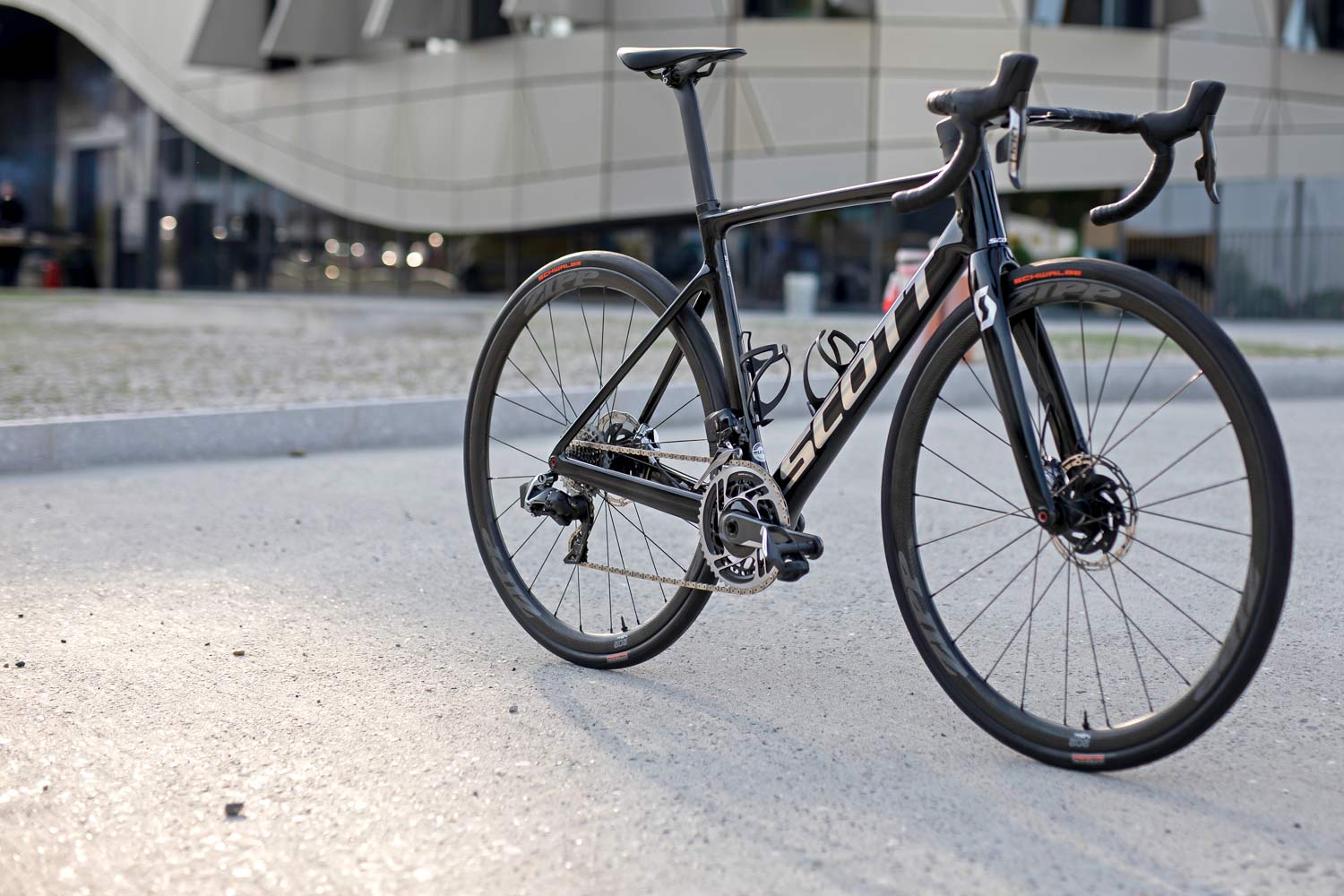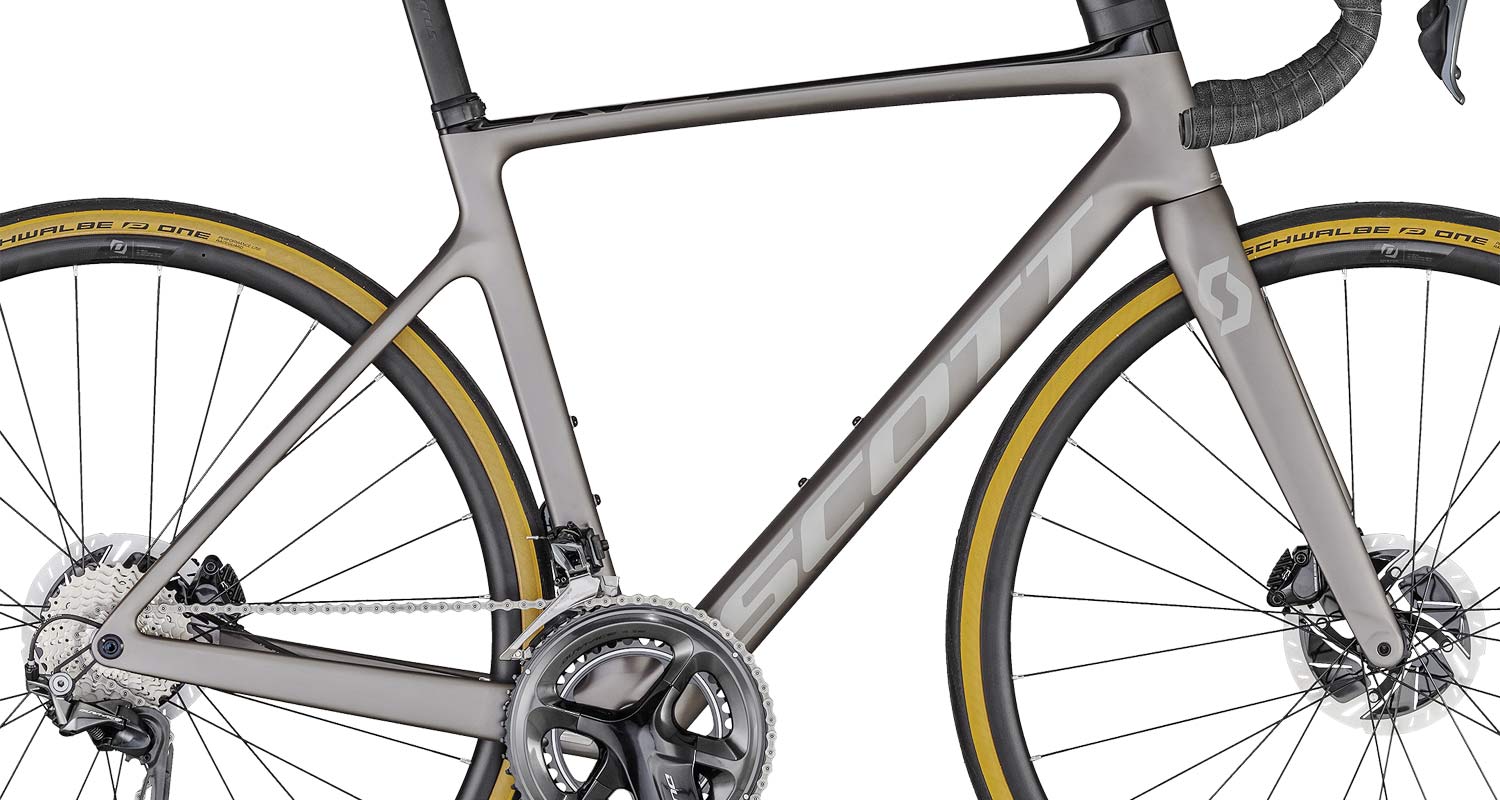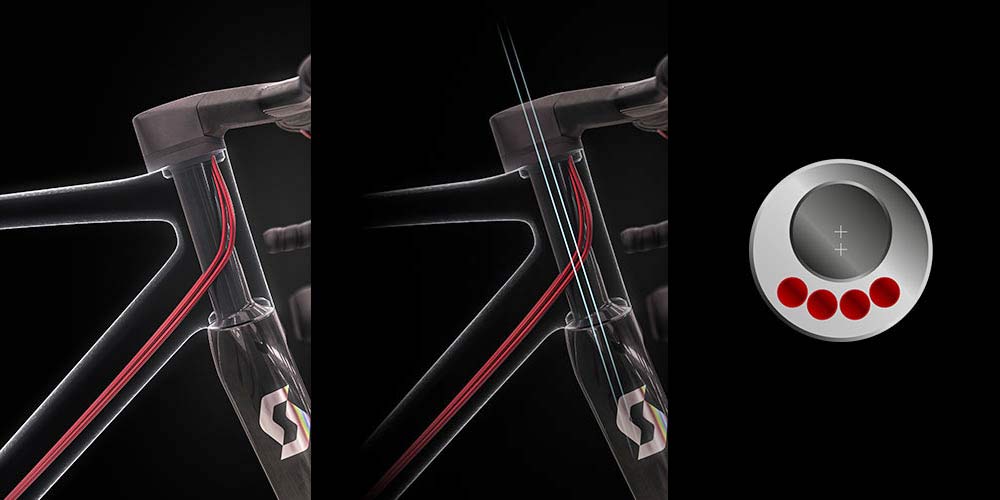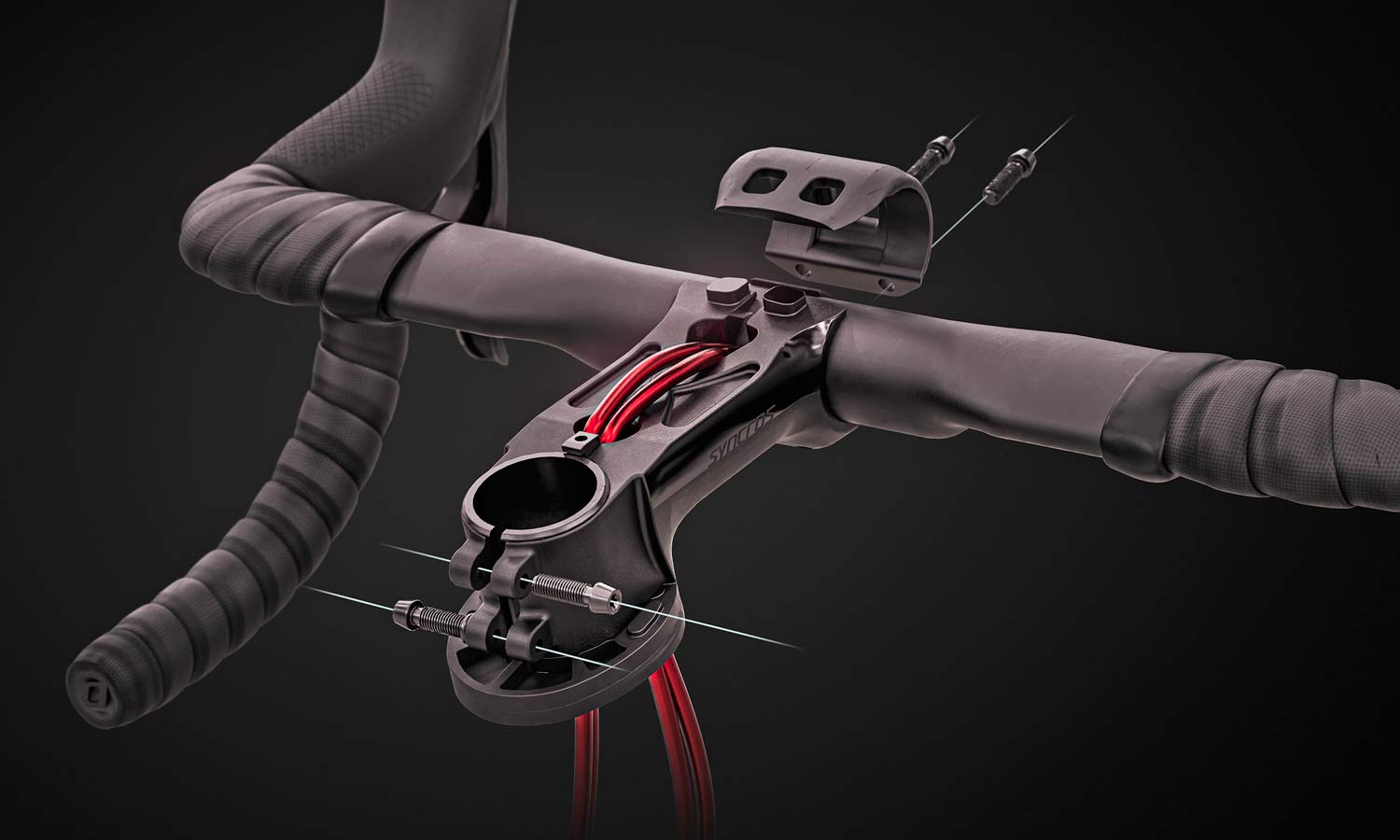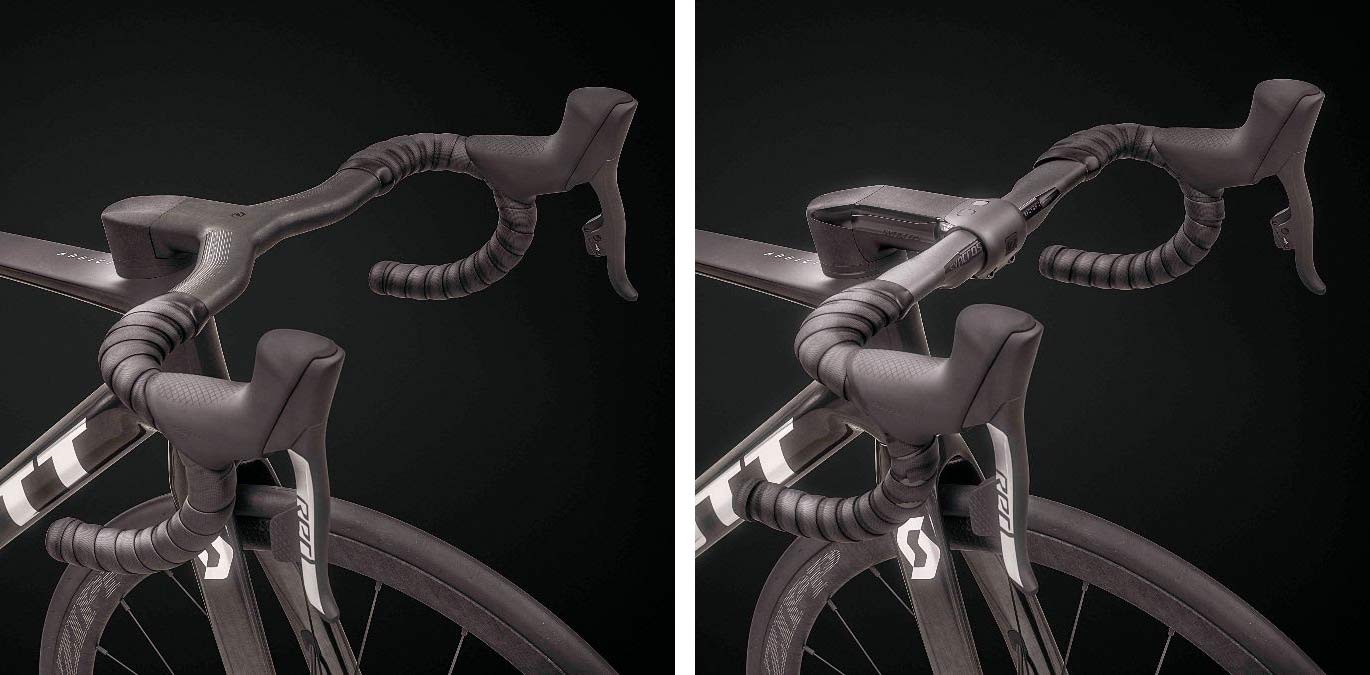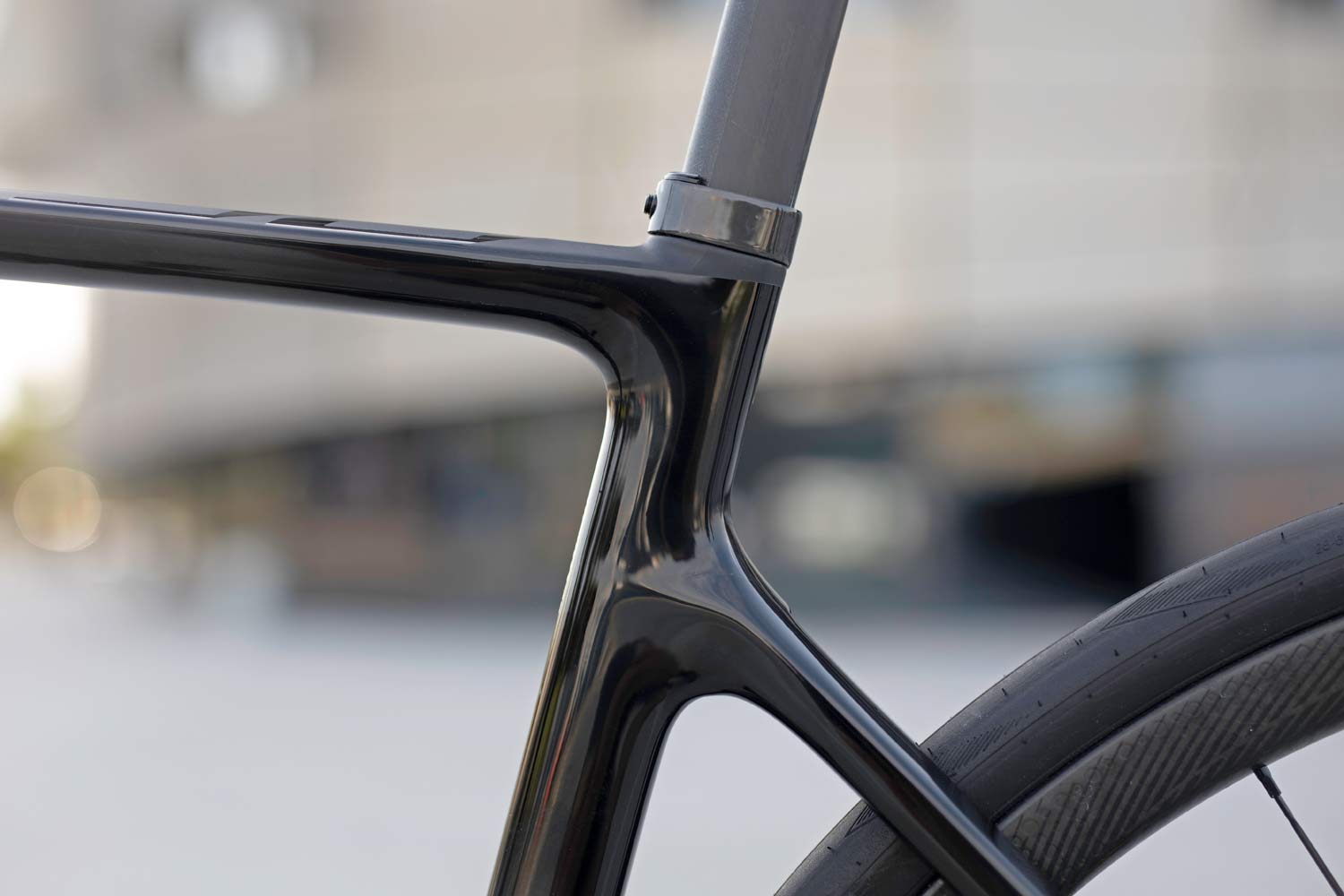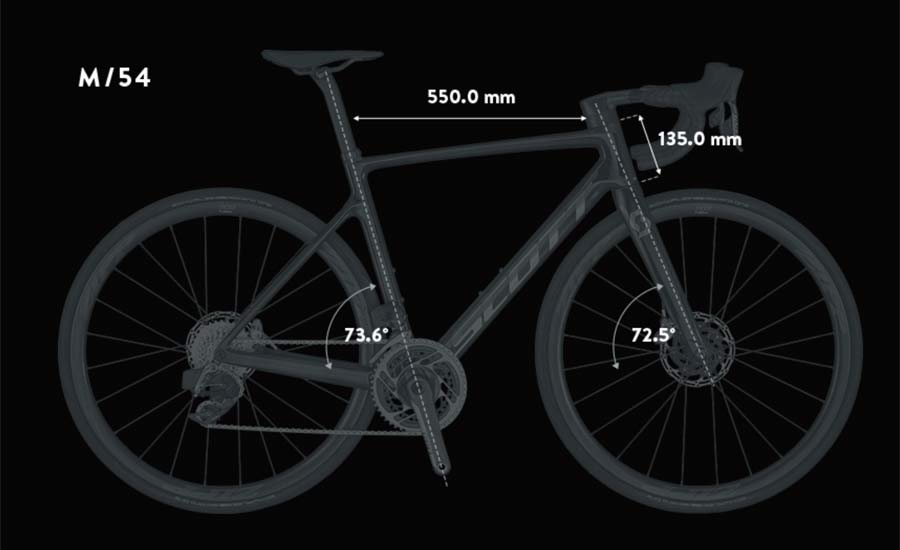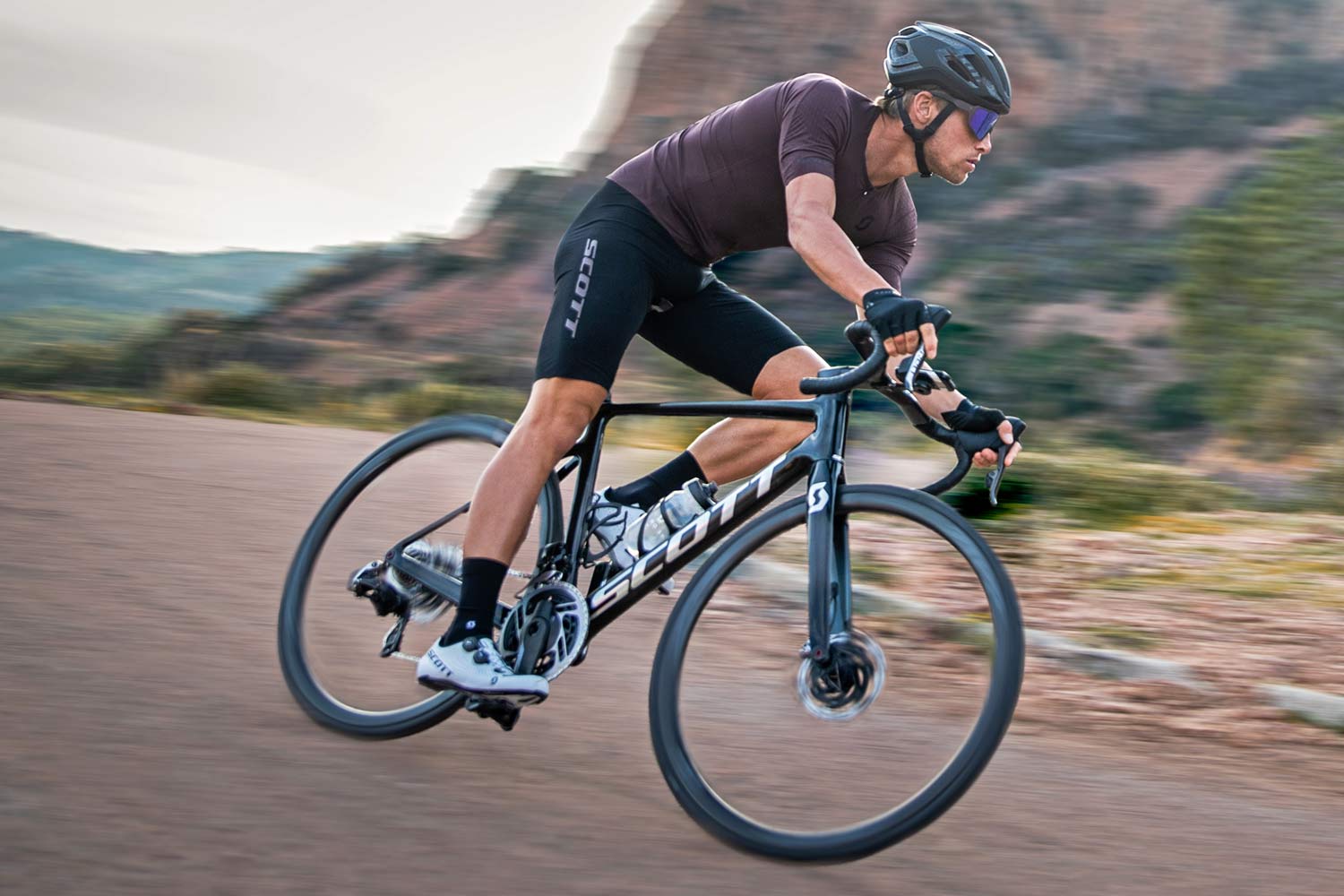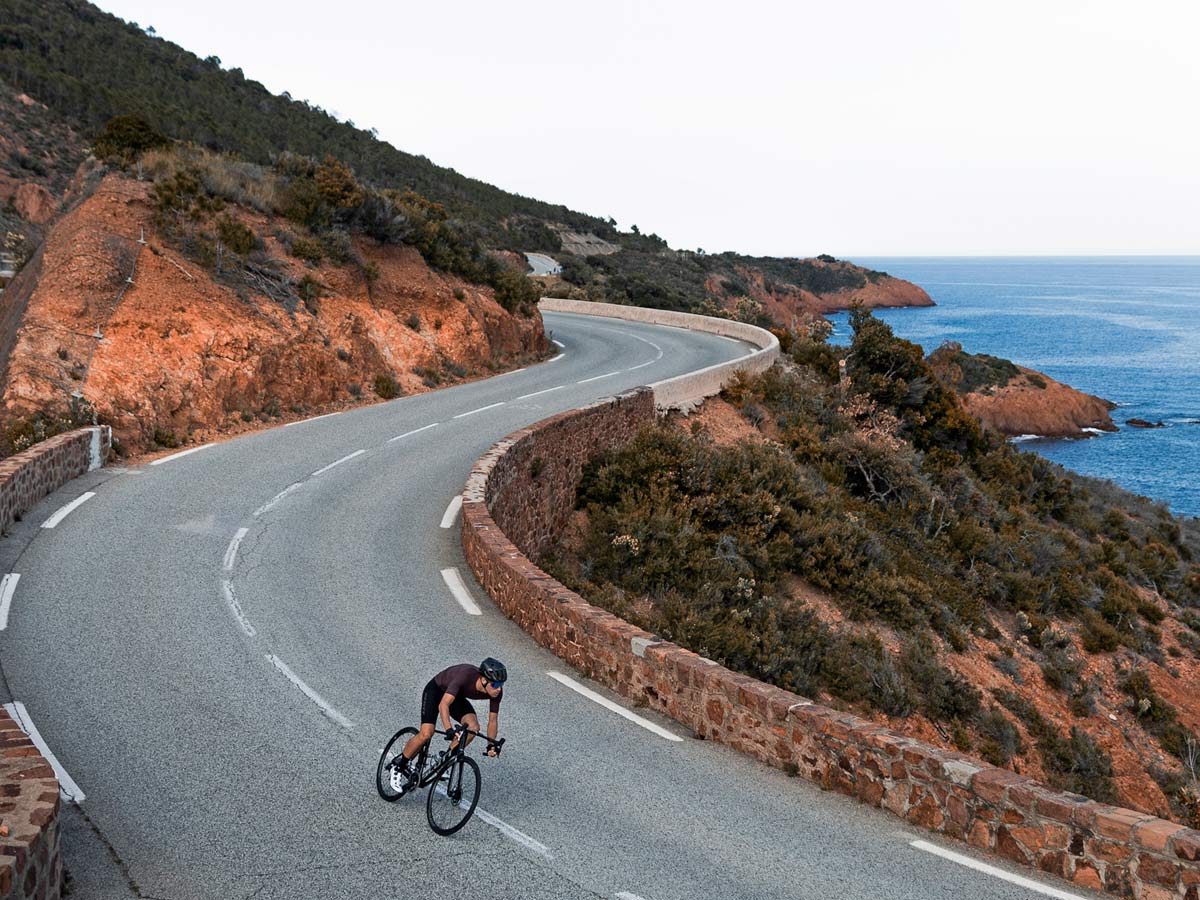Scott’s flagship Addict RC road racing bike gets a major overhaul ahead of its debut racing the Tour de France next month. The new bike promises to be faster all-around, thanks to improved stiffness and dramatically updated aerodynamics from more design integration, all while retaining its hallmark light weight.
2020 Scott Addict RC lightweight carbon road race bike
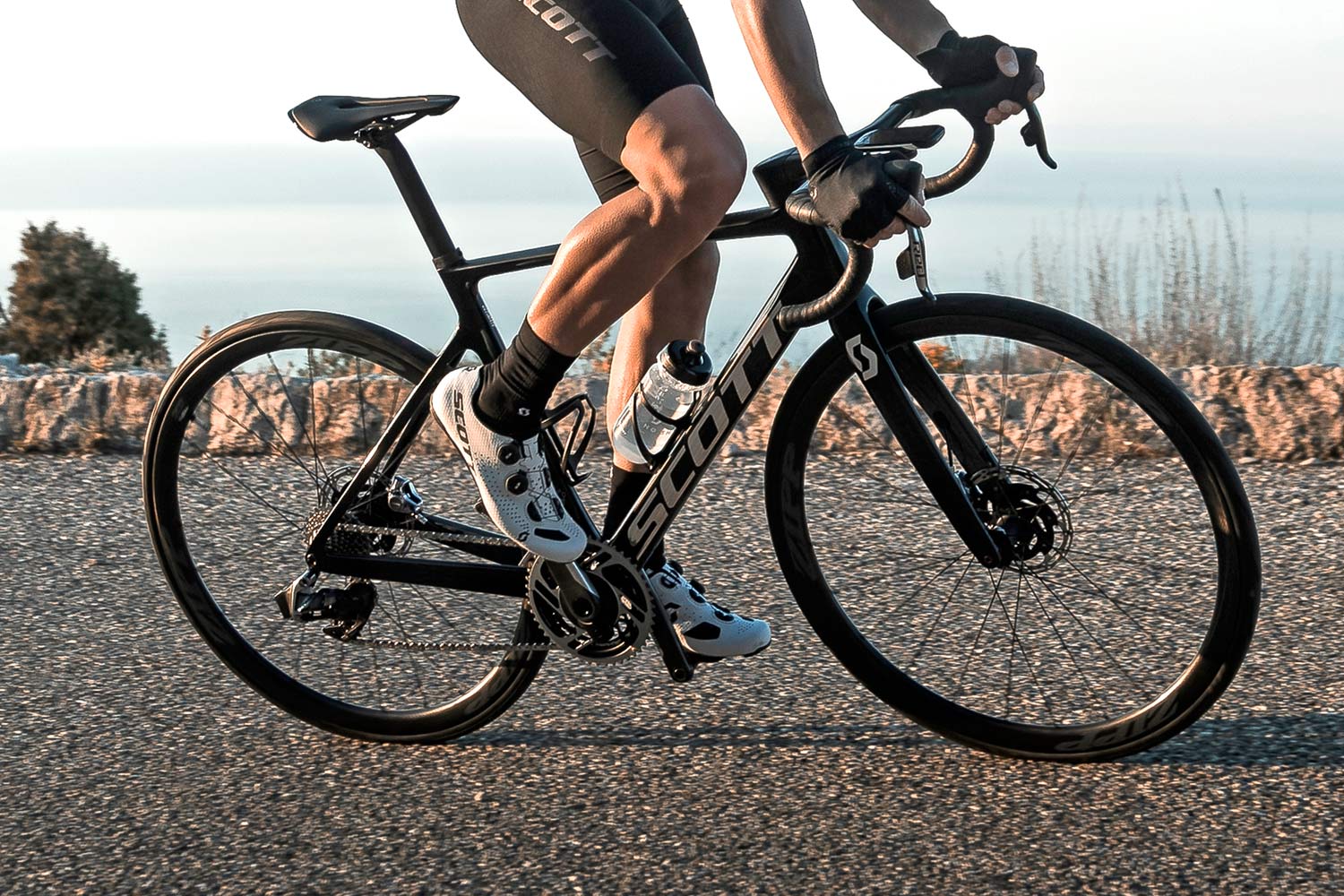
What started as a light road racing bike when it originally debuted more than a decade ago, the Scott Addict RC has defined itself as a baseline of pro-level, lightweight race performance. Billed more as a lightweight climber’s bike just last season, improvements in carbon construction & integration have allowed Scott to sneak more aero features into the new bike while retaining its low weight and rider comfort.
Tech details – What’s new?
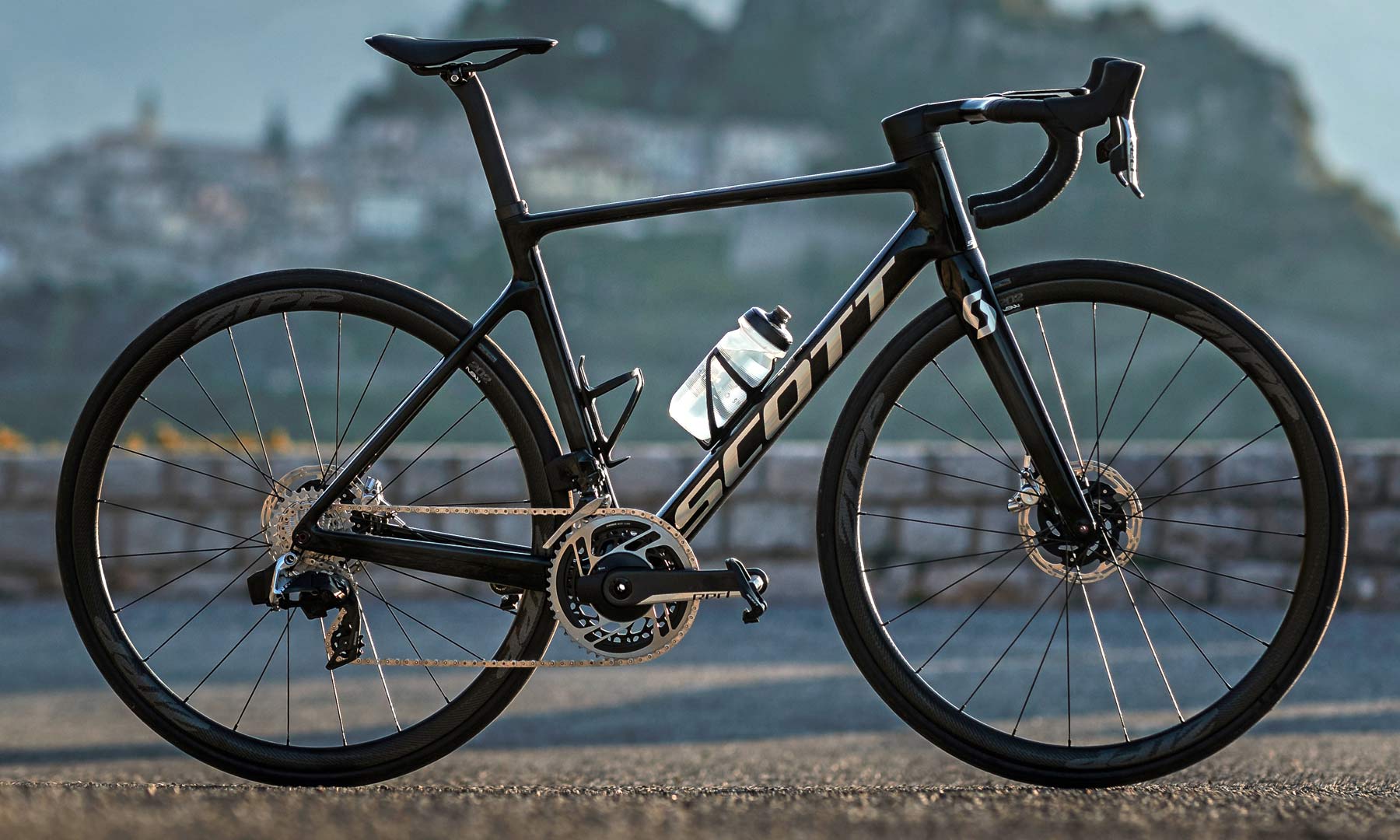 Still a climber according to Scott, the new bike takes some obviously design cues from more aero bikes. The new bike doesn’t go full aero though, instead picking up features like thin dropped seatstays, taller chainstays, and slightly deeper aero tubing profiles. Then the integration of components is its other big standout move.
Still a climber according to Scott, the new bike takes some obviously design cues from more aero bikes. The new bike doesn’t go full aero though, instead picking up features like thin dropped seatstays, taller chainstays, and slightly deeper aero tubing profiles. Then the integration of components is its other big standout move.
The new Addict RC SL frameset itself was developed to provide Mitchelton-Scott with a lightweight race bike that could be more versatile from days climbing in the high mountains to more rolling & hilly stages. For flat out sprint stages, the aero Foil family will still win.
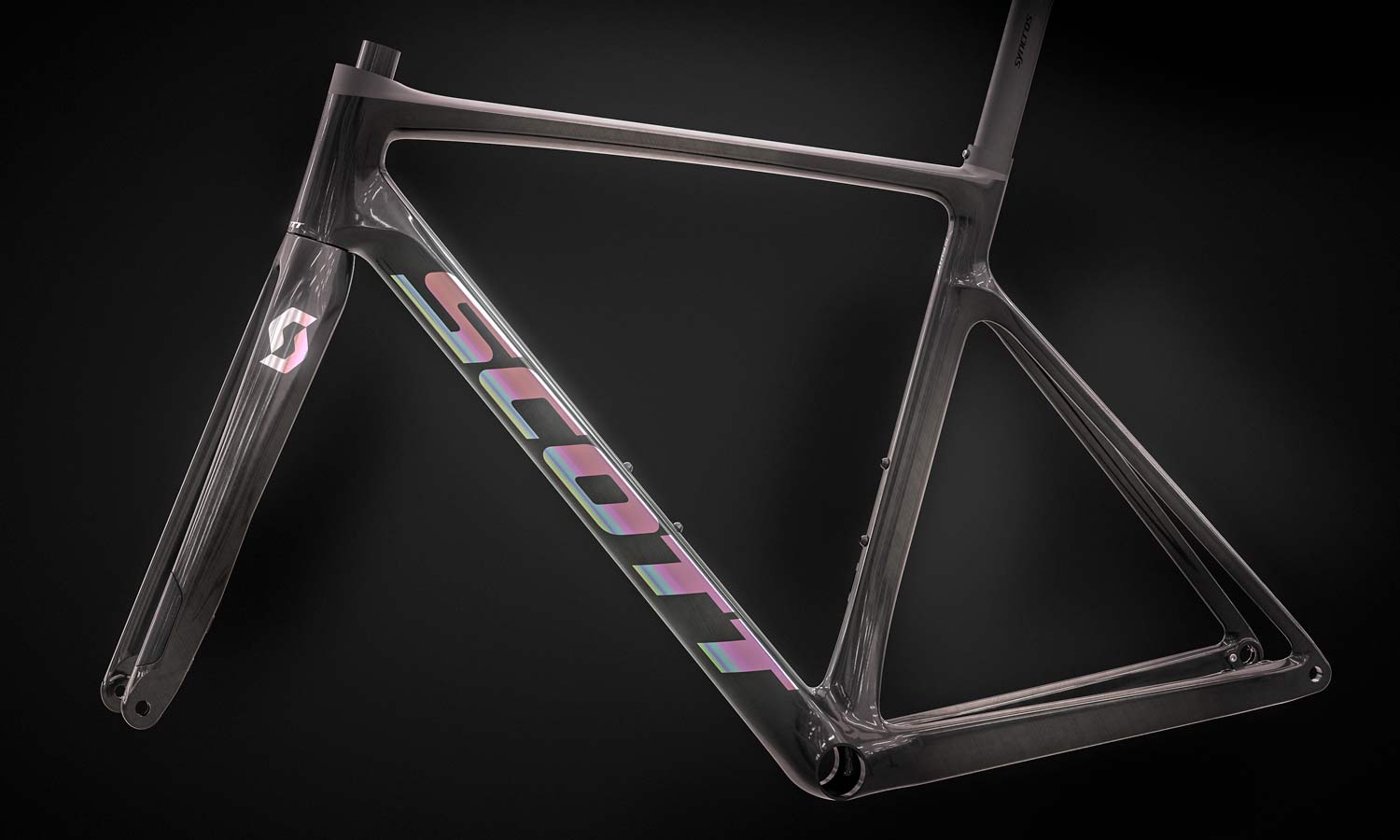 Beyond improving aerodynamics on the Addict RC and tucking all of the cables out of the wind, Scott has narrowed the performance gap for their light, versatile all-rounder by improving stiffness. The new Addict RC is said to be 14/5% stiffer than the previous generation through the backbone of the downtube to bottom bracket to chainstays.
Beyond improving aerodynamics on the Addict RC and tucking all of the cables out of the wind, Scott has narrowed the performance gap for their light, versatile all-rounder by improving stiffness. The new Addict RC is said to be 14/5% stiffer than the previous generation through the backbone of the downtube to bottom bracket to chainstays.
Part of that goes down to more premium carbon, but also to completely hollow seat & chainstay construction, and hollow dropouts that allowed carbon to be placed more carefully to boost stiffness without added weight.
Thanks to the dropped seatstay design, that extra stiffness does not impact rider comfort at the saddle.
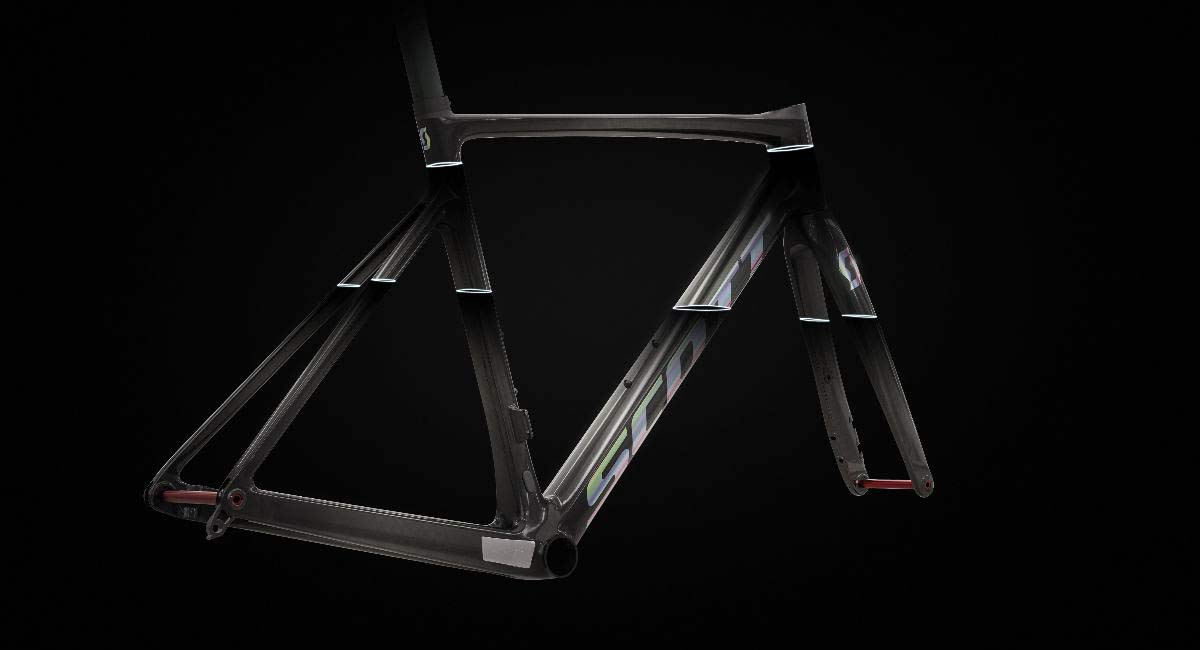 Aerodynamics was obviously a place where Scott could make iterative improvements to the Addict RC. The new bike reshapes every frame tube with more aerofoil optimized horizontal profiles, while not quite pushing to the extremes of the UCI design limitations like the Foil does. Revised fork blades play a big part here, as do the dropped seatstays.
Aerodynamics was obviously a place where Scott could make iterative improvements to the Addict RC. The new bike reshapes every frame tube with more aerofoil optimized horizontal profiles, while not quite pushing to the extremes of the UCI design limitations like the Foil does. Revised fork blades play a big part here, as do the dropped seatstays.
Cockpit & cable integration
Looking at the new Addict RC one of the first things to notice is the lack of cables – and also the lack of any cable routing ports. Probably the biggest trend in road bikes (and even some mountain bikes) now is getting every cable or wire out of the wind. While that might make for some hassles with your friendly neighborhood bike mechanic, it certainly creates a tidy look to the bike. And fewer things flapping around on the bike mean watts saved.
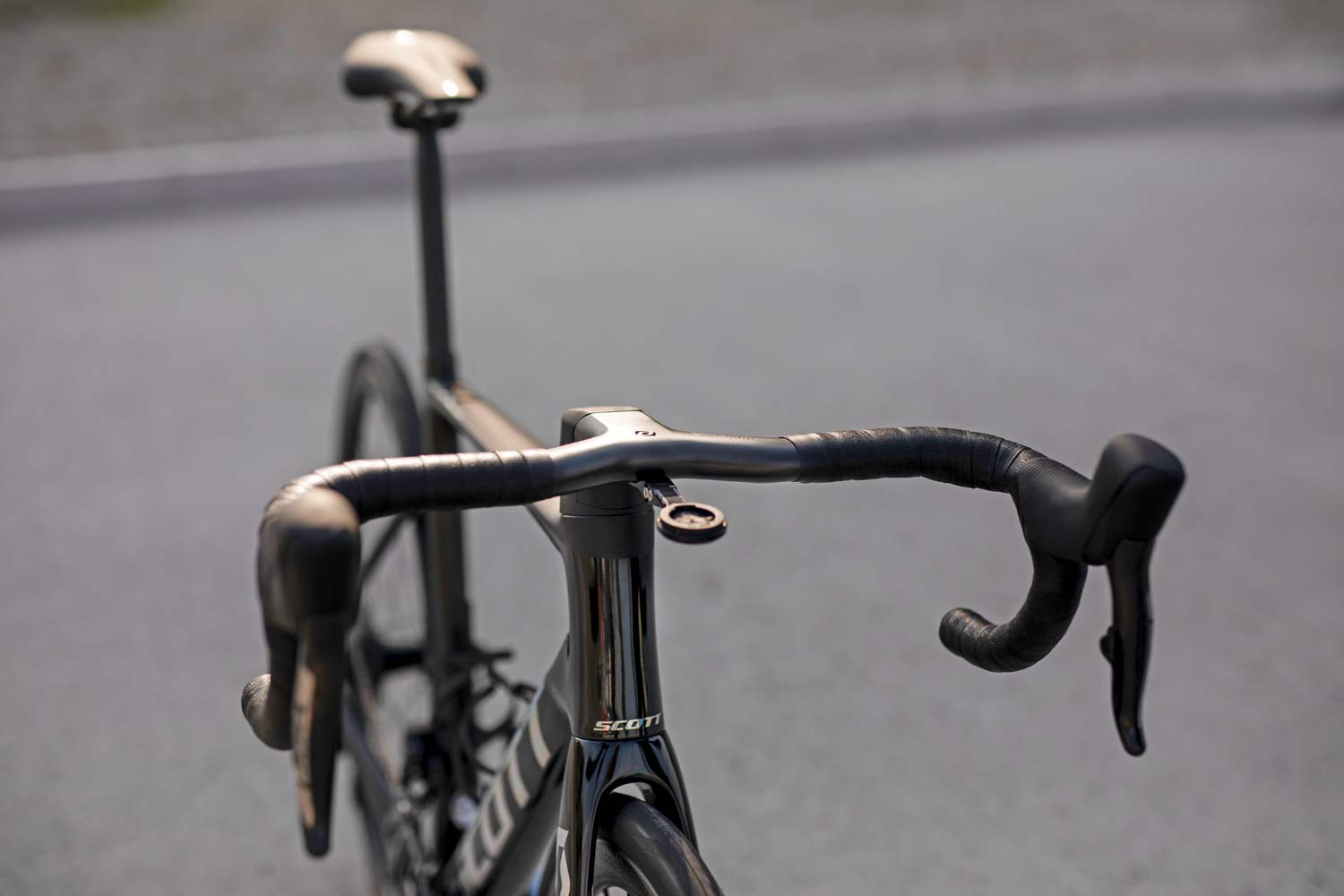 The new bike’s premium integrated cockpit solution is a one-piece Syncros Creston iC SL carbon bar+stem combo. The bar gets internal routing from the outside bend at the top of the bars, so nothing is visible to the wind. And a forward sweep out from the stem ensures a smooth curve of the cables inside, so even mechanical drivetrains shift smoothly.
The new bike’s premium integrated cockpit solution is a one-piece Syncros Creston iC SL carbon bar+stem combo. The bar gets internal routing from the outside bend at the top of the bars, so nothing is visible to the wind. And a forward sweep out from the stem ensures a smooth curve of the cables inside, so even mechanical drivetrains shift smoothly.
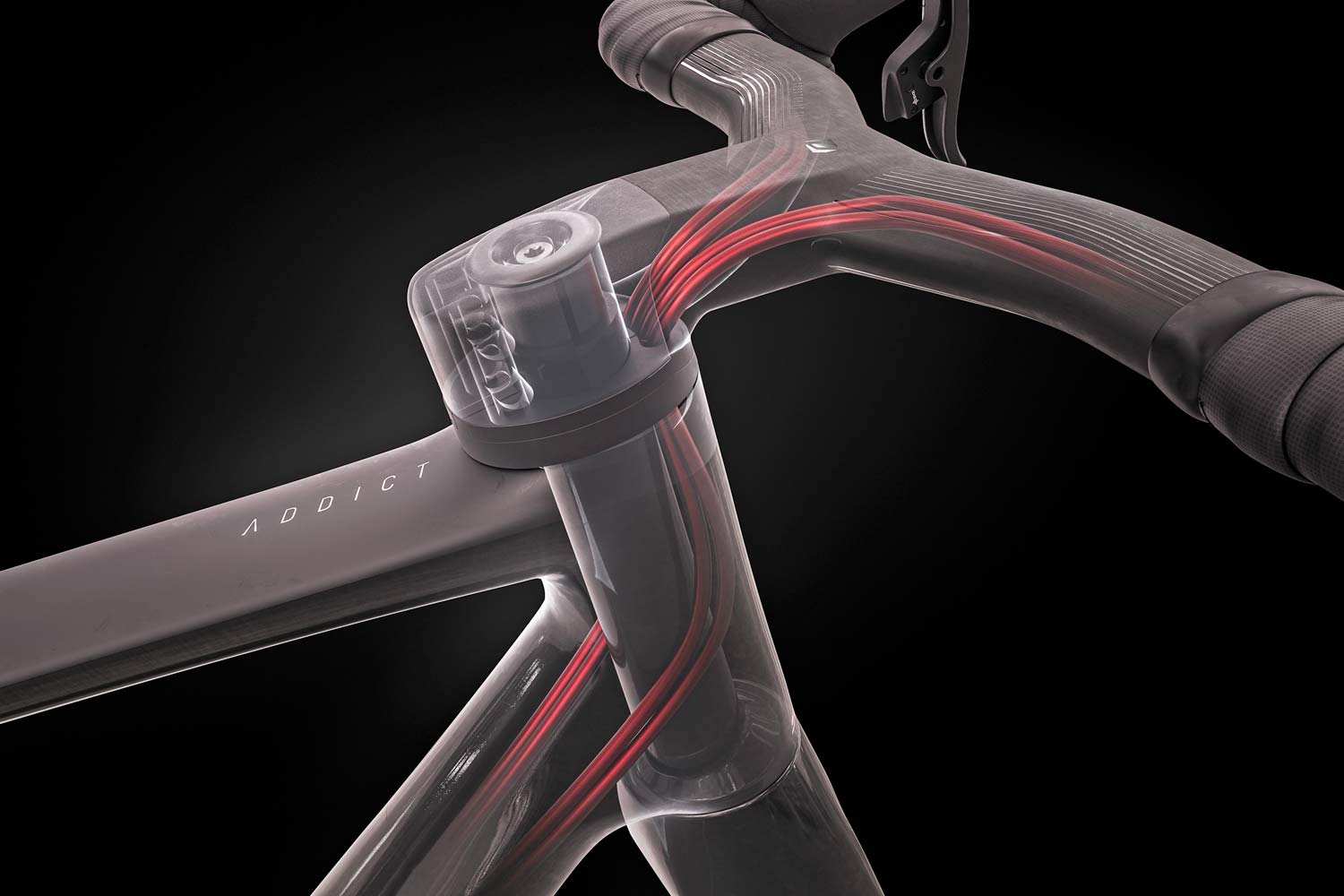 Scott calls the new Addict RC the “first bike with completely integrated cable routing for both mechanical and electronic shifting without any compromise on shifting, braking, steering performance or head tube stiffness.” That’s a bold claim, but Scott includes a quite roomy setup inside of their integrated cockpit & headtube to make it work.
Scott calls the new Addict RC the “first bike with completely integrated cable routing for both mechanical and electronic shifting without any compromise on shifting, braking, steering performance or head tube stiffness.” That’s a bold claim, but Scott includes a quite roomy setup inside of their integrated cockpit & headtube to make it work.
The secret is a bit complicated, as the Addict RC’s steerer tube is eccentric. That means that the steerer tube tapers towards the back as it rises up from the lower headset cup, allowing for ample space inside of the top bearing (in front of the tapered steerer) to fit two hydraulic hoses & two mechanical shift lines. That way everything rotates smoothly inside the frame, without binding of the need for extra cutouts in the frame or fork.
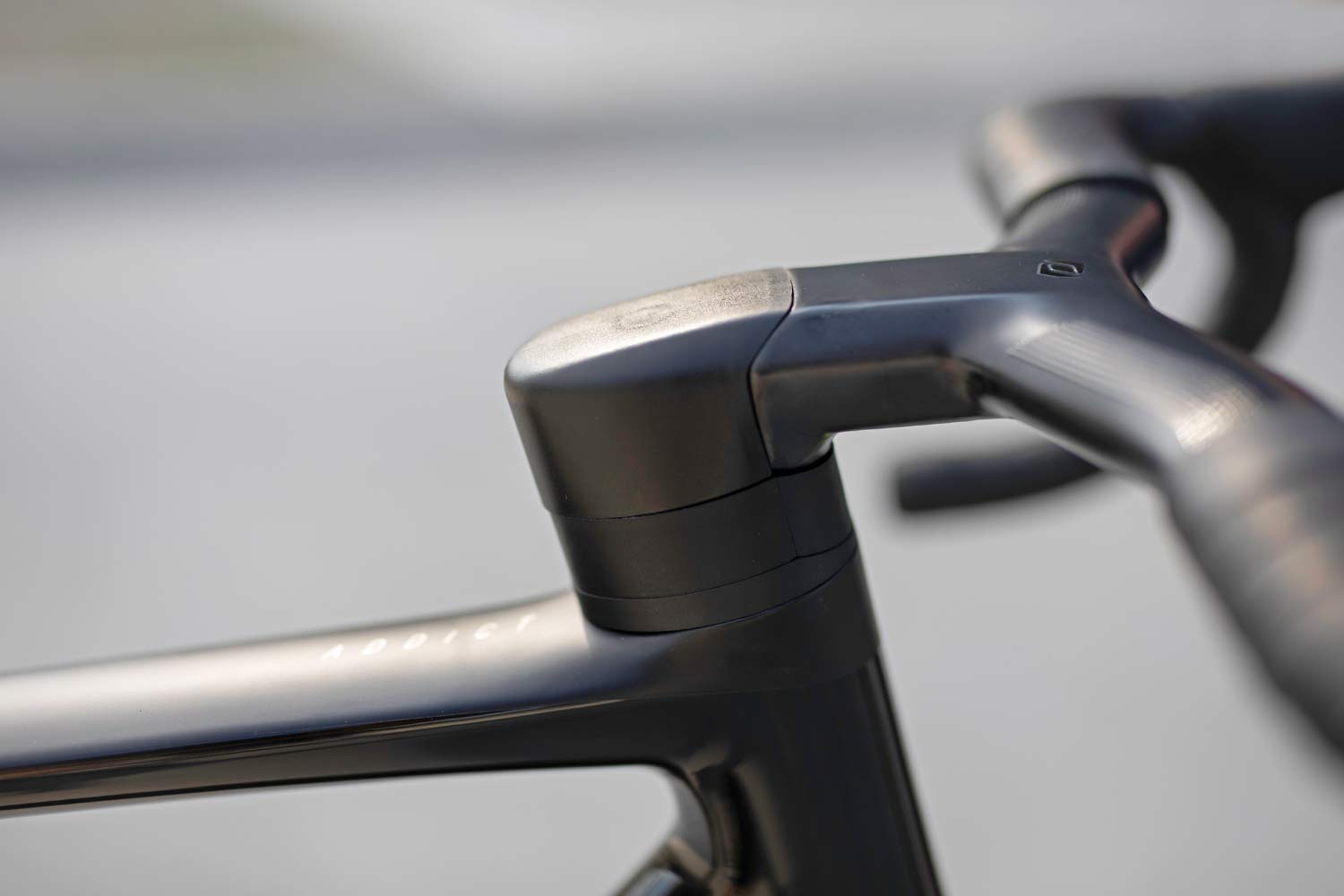 On the outside it is all clean, with a stem cap that slips down over even the regular steerer & top cap bolts. Plus there are snap together spacers that allow for a small bit of height adjustment without re-routing (assuming the steerer it cut to length as needed.)
On the outside it is all clean, with a stem cap that slips down over even the regular steerer & top cap bolts. Plus there are snap together spacers that allow for a small bit of height adjustment without re-routing (assuming the steerer it cut to length as needed.)
Not everyone is going to end up with a one-piece integrated bar, though. So Scott developed a two-piece alloy bar and stem setup that also provides the same level of aero integration (and thankfully more user adjustability.)
The top end complete bikes get the one-piece, full carbon Syncros Creston iC SL carbon bar+stem combo (above, left) while the more affordable builds get the two-piece, all alloy Syncros Creston iC 1.5 compact bar & Syncros RR iC stem setup (above, right).
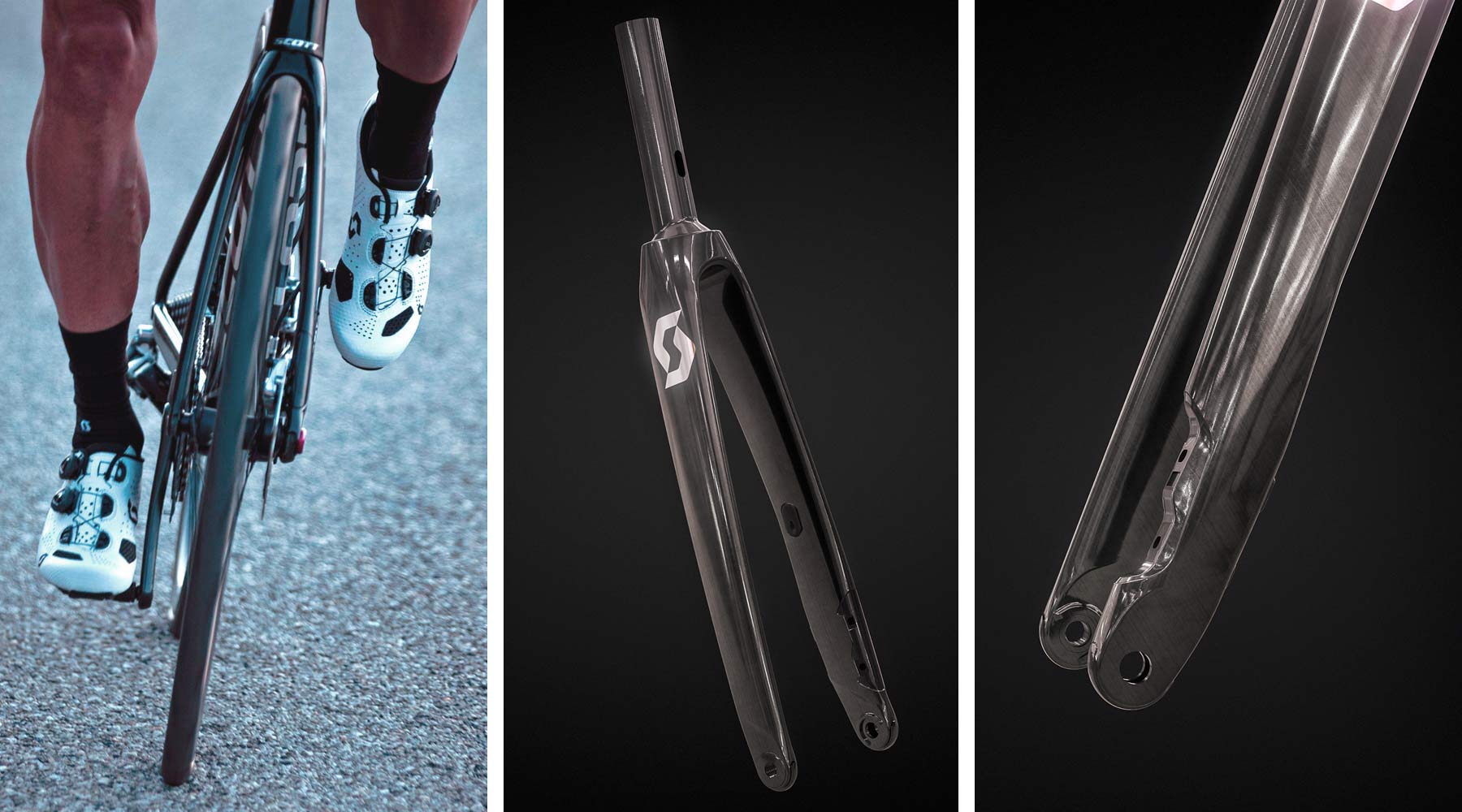 The new fork gets added integration as well. Besides tidy internal routing & neatly tucked in flat mount brakes, the 12mm thru-axle fork also moves to a new direct design for the front brake caliper. Gone is the standard flat mount adapter plate, instead the caliper is bolted directly from the front of the fork leg, then a separate cover snaps into place to cover the exposed bolts.
The new fork gets added integration as well. Besides tidy internal routing & neatly tucked in flat mount brakes, the 12mm thru-axle fork also moves to a new direct design for the front brake caliper. Gone is the standard flat mount adapter plate, instead the caliper is bolted directly from the front of the fork leg, then a separate cover snaps into place to cover the exposed bolts.
While most integrated design bikes have moved to internal seatpost clamps (annoyingly, I think), the new Addict RC uses a simple ultralight 12g external clamp that pulls tightly around the carbon frame, and was said to even allow for a lightweight carbon seatpost.
Geometry
Geometry does not appear to substantially change at all from the current Addict RC, having been developed and refined for racing with Mitchelton-Scott. The new Addict RC includes a wide seven size range (47-61cm.)
Model & spec overview
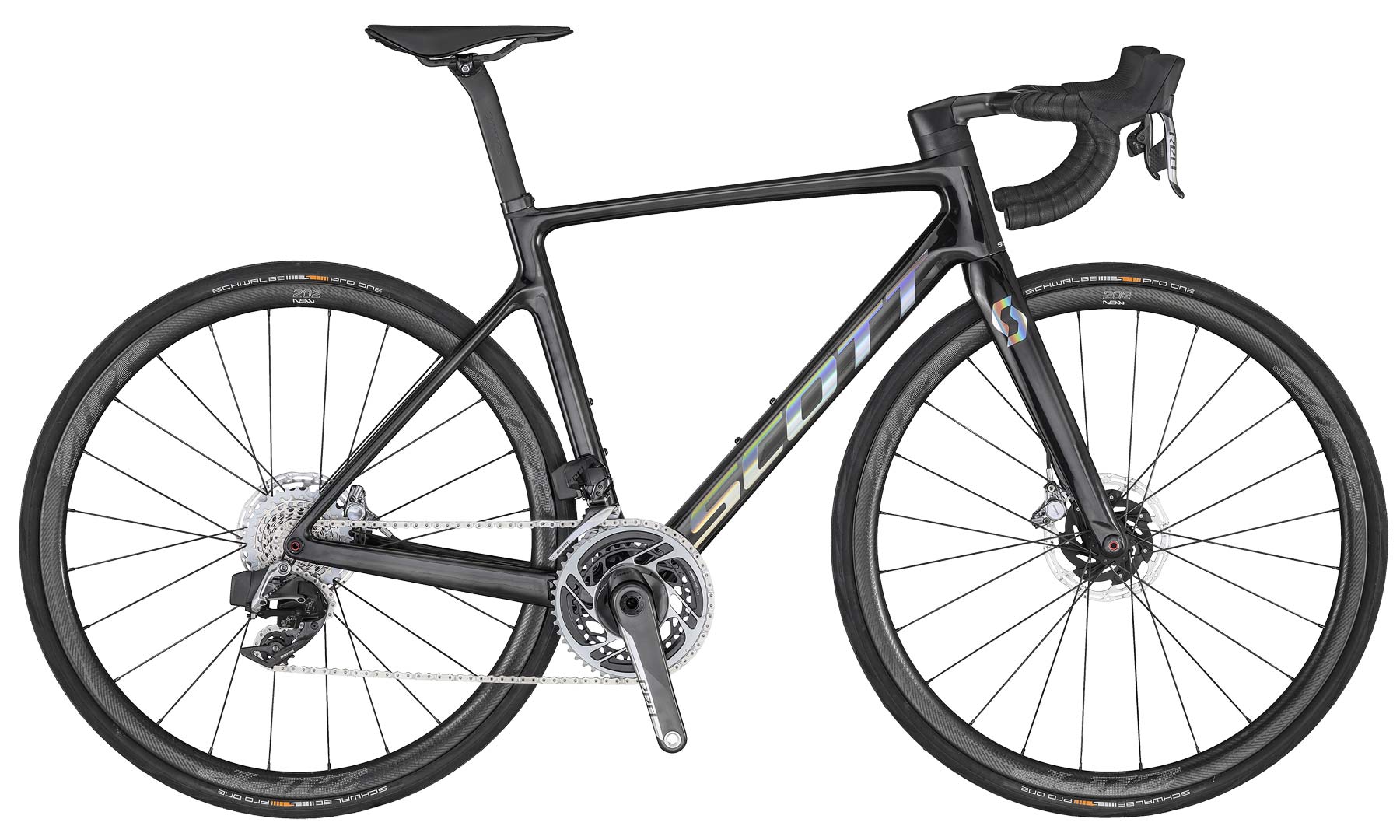
The new Addict RC will be available in several complete bike builds, across a relatively wide price & spec level to appeal to serious road racers at all levels. Only the top Scott Addict RC Ultimate will get the lightest RC SL frame & fork, constructed from the most premium HMX SL carbon blend. That halo build gets a SRAM Red eTap AXS 2×12 groupset, the one-piece Creston iC SL cockpit & Zipp 202 NSW wheels for a claimed 6.9kg (15.21lb) weight.
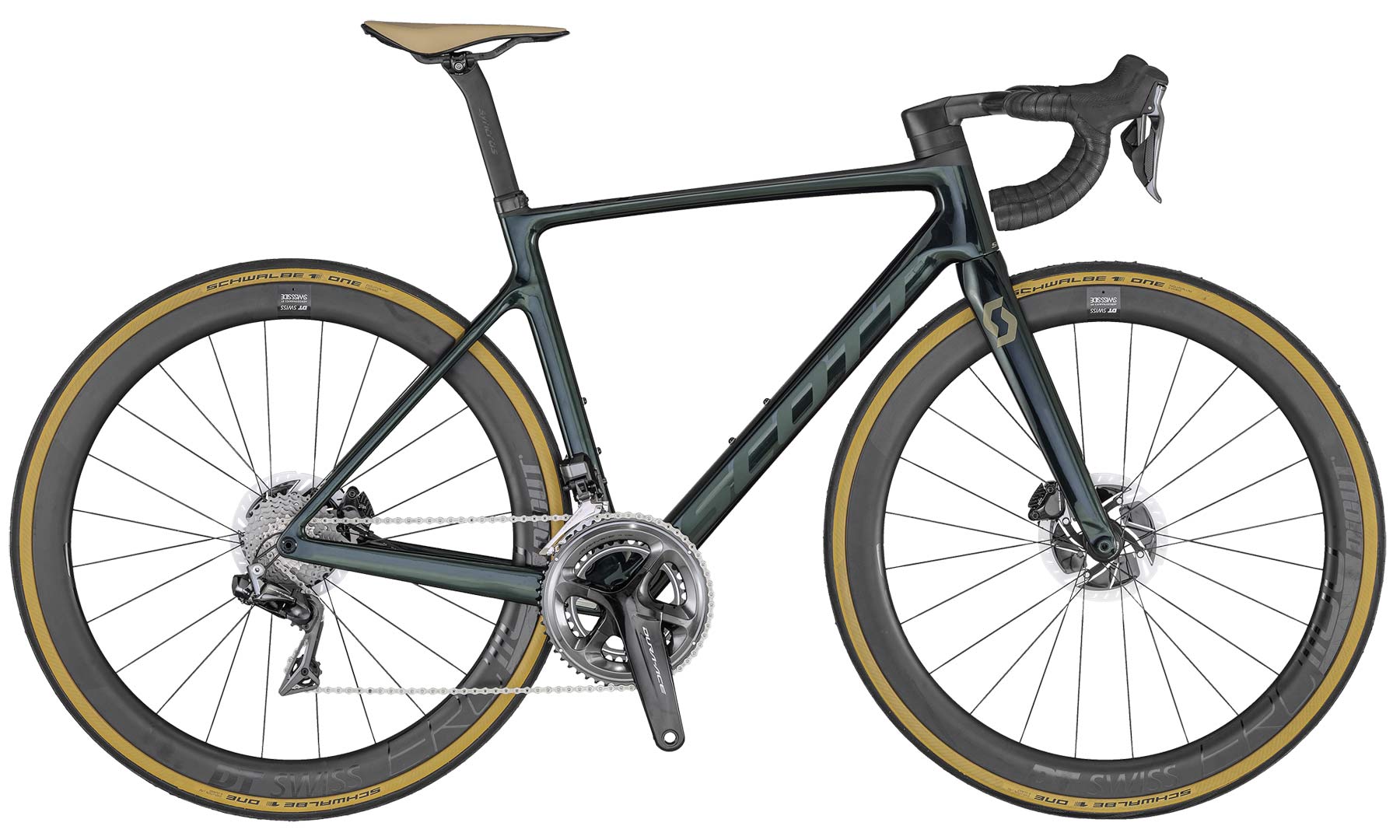
The next down Addict RC Premium is still going to be a pricey build, even with the slightly lower spec HMX hi-mod carbon construction. It gets a full Shimano Dura-Ace Di2 build, the one-piece Creston iC SL cockpit, and DT Swiss ERC 1100 carbon wheels (interestingly DT’s slightly wider aero Endurance wheels). Claimed weight – just 7.12kg (15.7lb).
A similar team edition called the Addict RC Pro and a mechanical Dura-Ace groupset will also be unveiled in the lead in to Le Tour.

One tiny step down, the Addict RC 10 gets D-A mechanical, the two-piece Syncros Creston bar & RR iC stem, and Syncros wheels (7.81kg/17.22lb) in this red (or gray).
The Addict RC 15 gets Ultegra Di2, the two-piece Syncros bar & stem, and Syncros wheels (7.55kg/16.64lb) in this gray (or red).

The Addict RC 20 gets Force eTap AXS, the two-piece cockpit, and lower profile Syncros wheels (7.9kg/17.42lb).
The last Addict RC 30 is still quite a premium complete build with Ultegra mechanical, the Syncros bar & stem, and Syncros wheels (7.94kg/17.5lb) in this blue (or bright yellow).
Pricing & availability
Even though it debuts now (ostensibly ahead of being raced at the Tour de France in a couple weeks), the all-new 2020 Scott Addict RC won’t be available to consumers until sometime in autumn 2019. Pricing is also not set, but will be revealed “by the 1st of September.”
Interestingly, there was also no specific mention of the endurance geometry version of the all-rounder road bike – the standard Addict. But this new Addict RC appears to be often labeled simply as ‘Addict’, suggesting that the more comfort-oriented, upright geometry version of the bike should get similar updates soon as well.
